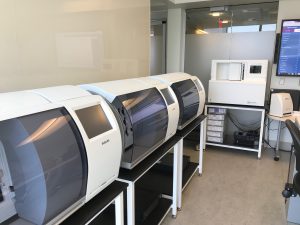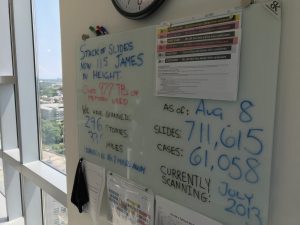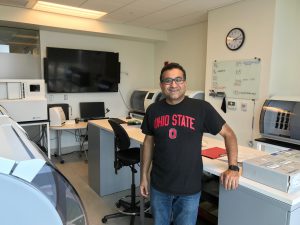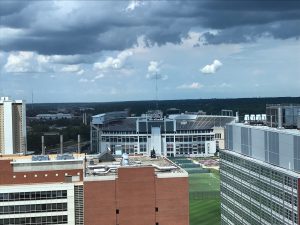Greetings from Columbus and The Ohio State University Digital Pathology Core
 As a Michigan State Spartan and a Northwestern Wildcat it pains me a little this is happening at Ohio State but at least it is in The Big Ten and not at Michigan!
As a Michigan State Spartan and a Northwestern Wildcat it pains me a little this is happening at Ohio State but at least it is in The Big Ten and not at Michigan!
I first met Dr. Anil Parwani 14 years ago at a whiskey bar in Vancouver 3 USCAPs in Vancouver ago. He was finishing up his fellowship in genitourinary and I was close to finishing up my 4-year military obligation. We were both about to be on the “outside” soon. We talked about the promise of digital pathology and what we hoped could be done.
Arguably, we knew that the technology would catch up to our retinas but questioned what it would take for it to become mainstream in surgical pathology.
At that time, and perhaps even at that particular meeting, digital pathology relied upon static images and robotic telepathology. Mass produced whole slide imaging devices that could reliably, reproducibly scan slides over time were starting to make an appearance. Scan times, reliability and reproducible high-quality images with high throughput were still not widely available. The thought of scanning tens of thousands of slides in a busy clinical practice per week or per month was still somewhere in the future.
Few products were available in terms of software that could manage all the images, slide data, patient information and send/receive that information to/from the LIS and/or EMR. In fact, EMR was not a 3-letter word then that many physicians detested. We still used something called paper and pens and plastic folders called “Charts”. Our “EMR” system was a rudimentary system written in MUMPS (Massachusetts General Hospital Utility Multi-Programming System), a general-purpose computer programming language that provides ACID (Atomic, Consistent, Isolated, and Durable) transaction processing. It was reliable and contained some information and processed some orders and accepted some results but the thought of LIS/EMR integration was more than a few years away.
Today, on the 18th floor of The James Cancer Hospital at The Ohio State University, one of 45 National Comprehensive Cancer hospitals, all that is changed.
There exists a lab today overlooking Columbus, Ohio that is scanning slides with high throughput for clinical and research use with LIS integration and plans to integrate with the EMR. Five days a week three shifts of technicians employed by Inspirata scan slides on one of 8 Philips scanners and a Huron scanner with 3D bar code tracking integrated with the LIS. This is all part of Inspirata’s digital pathology workflow solution that manages processes, and integrates the patient information and slide information into a worklist for case retrieval.
An additional room off the high-throughput scanning facility is an innovation lab containing a PC with an additional scanner for research, including algorithm development. This cockpit is also proposed to be used to discuss with patients in a private setting their pathology findings using whole slide imaging rather than trying to do so over a dual microscope.
This digital pathology initiative began in July 2016, and is part of a 10-year, Inspirata managed service comprising an end-to-end digital pathology workflow solution now being used for primary diagnosis of cancer cases. The cockpit deployment portion of the project is part of a phased-adoption strategy wherein 42 of the department’s 55 pathologists are actively using digital pathology in their own offices.
Since late May of last year, the digital pathology laboratory has scanned over 711,000 slides on more than 61,000 cases from recent accessions and retrospective cases going back to 2013 as of this post.
If someone had told me on that rainy night in Vancouver in March of 2004 that within a dozen years, there would be an institution embarking on running a bank of high-throughput scanners 24/5 to scan slides for cancer research and primary diagnosis, it would have seemed unlikely. The scanners were not that fast. LIS companies were not that motivated to interface with them. Pathologists were reluctant to give up doing their work on microscopes. Managing the data and metadata and image data was larger than any scale any pathology department at that point had addressed. We didn’t talk about data storage in petabytes back then..
Today, Dr. Parwani and his colleagues are doing just that with no sign of slowing down.
The Association for Pathology Informatics will be hosting a workshop on digital pathology and artificial intelligence this December with guided tours of the operation at The Ohio State University (https://www.pathologyinformatics.org/workshop_2018.php).






































